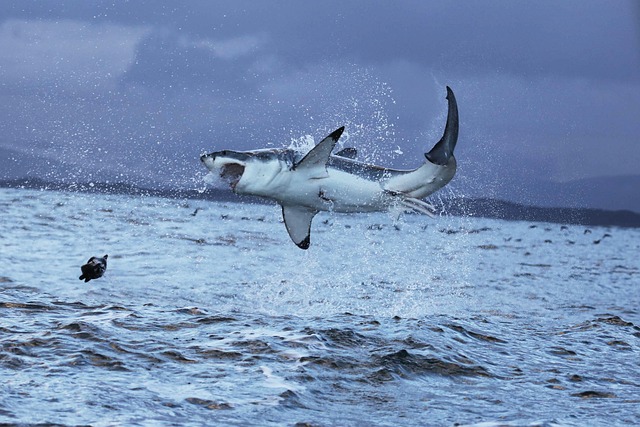
The vast expanse of the ocean is a mysterious realm teeming with diverse life forms. Beneath its shimmering surface lies a world of beauty and danger, where countless creatures have evolved to survive and thrive. While some marine species captivate us with their grace and beauty, others command fear and respect due to their deadly prowess. In this article, we’ll explore the top ten deadliest creatures that inhabit the depths of the ocean.
1. Box Jellyfish (Chironex fleckeri):

Often considered the most venomous marine creature, the box jellyfish is a translucent, bell-shaped organism with long, tentacle-like appendages. Its venom attacks the heart, nervous system, and skin cells, leading to excruciating pain and even death within minutes if stung.
2. Blue-ringed Octopus (Hapalochlaena spp.):
Hiding among the coral reefs of the Pacific and Indian Oceans, the blue-ringed octopus appears harmless, yet it carries one of the deadliest neurotoxins known to humans. Its bite can cause paralysis and respiratory failure, leading to death if not treated promptly.
3. Stonefish (Synanceia spp.):
Camouflaged among the seabed rocks, the stonefish is the master of stealth. It possesses venomous spines that deliver excruciating pain and swelling. In severe cases, the venom can be fatal, particularly to children and the elderly.
4. Saltwater Crocodile (Crocodylus porosus):
As the largest living reptile, the saltwater crocodile dominates estuaries, river mouths, and coastal areas throughout the Indo-Pacific region. Its powerful jaws and razor-sharp teeth make it a formidable predator, responsible for fatal attacks on unsuspecting humans.
5. Great White Shark (Carcharodon carcharias):

Known as the apex predator of the sea, the great white shark strikes fear into the hearts of many. Although they rarely target humans as prey, encounters can turn fatal due to the sheer size and power of these magnificent creatures.
6. Portuguese Man-of-War (Physalia physalis):
Often mistaken for a jellyfish, the Portuguese man-of-war is a colony of specialized organisms working together. Its tentacles can extend up to 165 feet and deliver a potent venom that causes severe pain, welts, and, in some cases, cardiovascular and respiratory issues.
7. Lionfish (Pterois spp.):
Originally native to the Indo-Pacific region, the lionfish has become an invasive species in the Caribbean and parts of the Atlantic. Its striking appearance hides venomous spines that can lead to extreme pain and, in rare cases, heart failure.
8. Cone Snails (Conus spp.):
Hiding within their intricately patterned shells, cone snails are deceptively beautiful. But don’t be fooled by their appearance; their harpoon-like teeth deliver venom that can paralyze prey within seconds. Some species of cone snails can be lethal to humans.
9. Blue Whale (Balaenoptera musculus):
The largest animal on Earth, the blue whale, while not intentionally dangerous, is included on this list due to the sheer magnitude of its size. Collisions with these gentle giants have resulted in fatal accidents for humans in small boats.
10. Killer Whale (Orcinus orca):
Also known as orcas, these intelligent and highly social creatures are often called “killer whales” due to their ability to hunt and kill marine mammals. While no fatal attacks on humans have been recorded in the wild, captive orcas have caused fatalities during interactions with trainers.
As we venture further into the ocean’s depths, it is essential to remember that while these creatures are formidable, they are also vital to the delicate balance of marine ecosystems. Respect and understanding of the ocean’s inhabitants will help ensure that both humans and marine life can coexist harmoniously in this awe-inspiring underwater realm.





